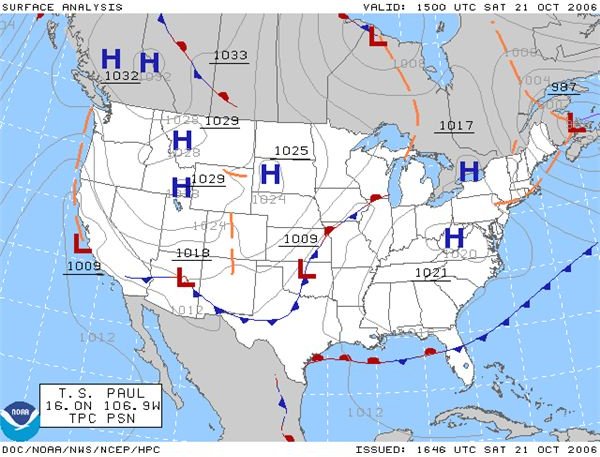What is a Barometer and How Does It Work?
Introduction to All About the Barometer: What It is and How it Works
There are a few different types of barometers that the meteorologists use to measure the atmospheric pressure. Barometers are also available for use in our homes. We begin with an overview of the development of the barometer, moving on to look at what is a barometer, and how does it work.
Overview of the Barometer
Barometers have been used to measure the atmospheric pressure since the mid 1640’s when they were invented by the Italian Evangelista Torricelli. This first device was a glass tube sealed at the top with an open bottom immersed in a container of water. The water rose and fell due to changes in the atmospheric pressure. Because water has a low density, a long glass column was required. Mercury was used instead, and this reduced the height of the column.
The aneroid barometer came next in 1843 and consisted of a small set of bellows that expanded and contracted according to the atmospheric pressure surrounding it. This device was superseded by the automated version of the aneroid barometer known as a barograph. We move on to what is a barometer and how does it work.
.
All About the Barometer: What It is and How it Works
Meteorologists require information about the atmospheric pressure to predict the forthcoming weather. A difference in atmospheric pressure between two locations causes winds to blow from the high towards a low pressure area with a high pressure area indicating good weather and a low one indicating storms.
Meteorologists record the atmospheric pressure, adding this to weather properties data gathered from other instruments to form their weather forecasts. The pressure can be in millibars (mB) or inches mercury (inches Hg)
A weather map showing high and low pressure areas is shown below;
Barometers used in our homes give an indication of the weather. The dials are calibrated in mB, showing low pressure through to high pressure clockwise, showing different conditions.
A barometer dial is shown below;
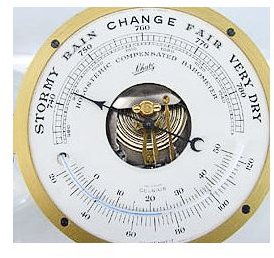
The four types of barometers
Water Barometer
The water barometer consisted of a 30’ long vertical glass tube that was sealed at the top; the open bottom was immersed in a cistern of water. As the atmospheric pressure increased, the level of the water in the column rose, falling again as the atmospheric pressure decreased.

Mercury Barometer
The standard mercury barometer design is the same as the water one only the glass tube is 3’ high.
As a storm approaches, the atmospheric pressure drops and the level of the column of mercury also falls. Once the storm passes and high pressure returns, the height of the column of mercury rises with the increasing atmospheric pressure.
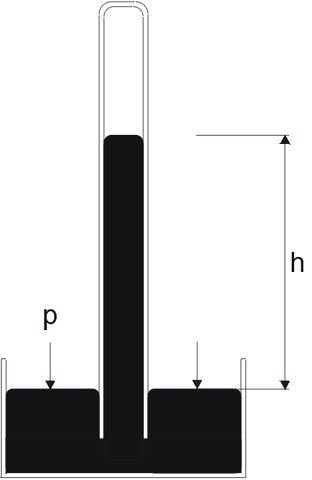
Aneroid Barometer
The aneroid barometer succeeded the water and mercury barometers and gives a very accurate measurement of atmospheric pressure. It consists of a small evacuated container with a corrugated top. As the atmospheric pressure rises, the corrugated top is pushed inwards and as the pressure decreases the top pops back up again. A system of levers connects the corrugated top to a dial that indicates atmospheric pressure in millibars.
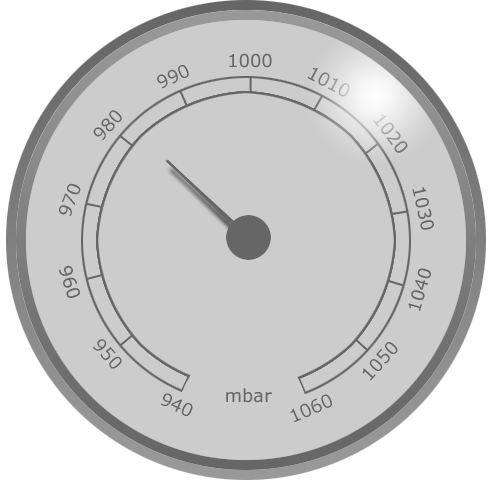
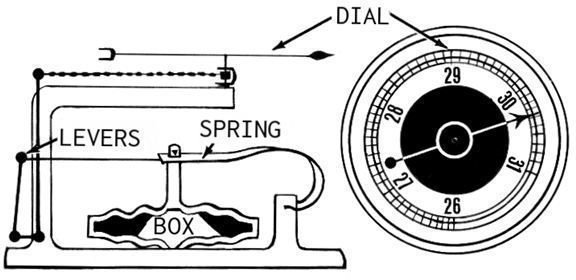
Barograph
The barograph is an automated version of the aneroid barometer, except there is a pen connected by levers to the corrugated top. This pen traces atmospheric pressures onto a barogram located on a revolving drum. Examples of barographs and barograms are shown below;
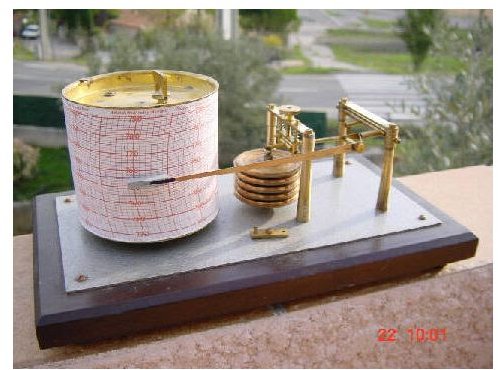

Summary
We have examined what is a barometer and how does it work as well as its development from a simple water column in the 1640’s to one of today’s sophisticated automatic atmospheric measuring device. Simple ones can be seen in many homes giving a prediction of the weather to expect. Industrial models are used by meteorologists to record atmospheric pressures, being one of the many instruments they employ to forecast the weather.
References
1. Atmospheric pressure: https://www.ace.mmu.ac.uk/eae/weather/older/pressure.html
2. Types of barometers: https://www.barometric-pressure.net/types.html
